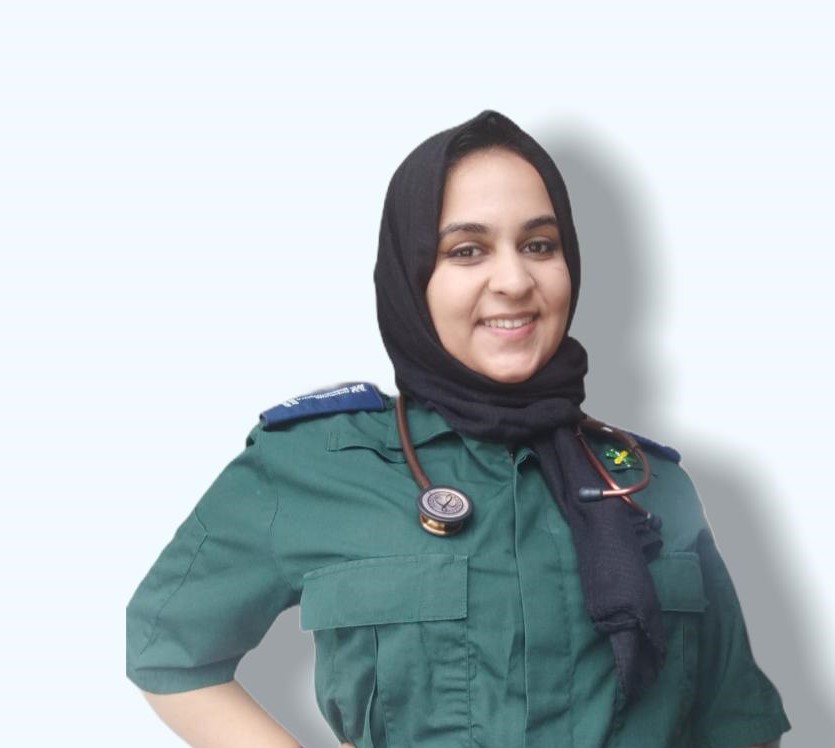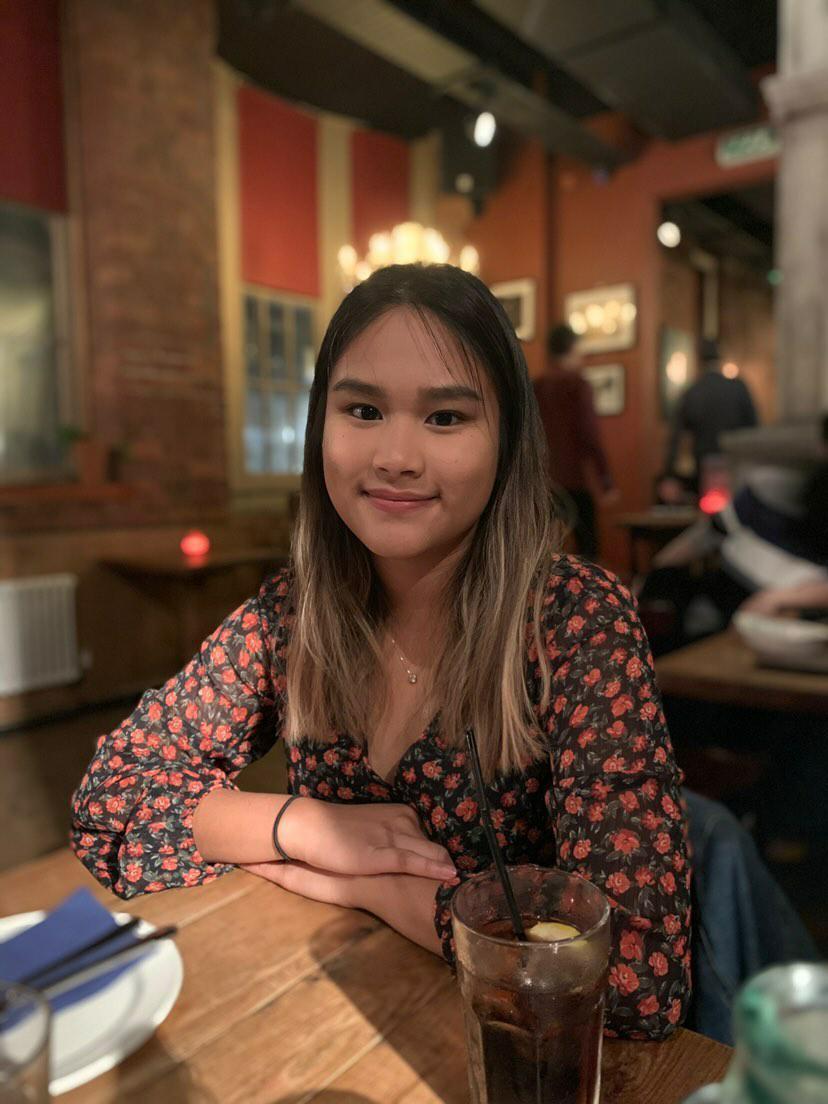Defying Stereotypes: Women in the Ambulance Service
By Mahdiyah Bandali MCPara, Paramedic

Defined as ‘a preconceived and oversimplified idea of the characteristics which typify a person, race or community which may lead to treating them in a particular way’ by the Oxford University Press (2022), stereotypes exist in every community and can act as barriers to not only understanding an individual’s identity truly, but also for the individual themselves to access different opportunities. In becoming part of the ambulance service, whether it be a clinician, call handler, manager or other, we have all had a unique journey to these roles. Often, many of us will face different hurdles or obstacles that those around us may not be able to empathise with or struggle to understand. These can be formed of many different attributes: the way you look, the accent you have, the place you grew up, which each in turn will come with predisposed opinions within society. And as a frontline public-facing profession, this can become even more of a challenge when we do not have a choice of who we may be sent to. I spoke to three individuals, each with a stereotype they had to tackle in their journey into becoming a paramedic, and their experiences in the ambulance service.
Waranya Kaewkhiew
Student Paramedic

Did you face any stereotypes during your practice placements as a student paramedic, or even before you came into the profession?
I tend to just ignore stereotypes or push them to the back of my mind, however they become really evident and frustrating when people, crew-mates and patients, start to play the guessing game of my race in practice.
Southeast Asian women tend to be on the smaller side, and many fellow colleagues, patients and even my family often will comment on how small I am which makes me doubt my place in the ambulance service. It makes me feel like I don’t belong because I’m ‘too small’ to manually handle larger patients or I can’t carry all the equipment.
How do you feel in terms of your personal progression in the ambulance service as a Southeast Asian woman?
At first, when I started my degree I was confident and I was ready to do anything and everything to impress my mentor. But my confidence began to drop slowly when I started experiencing racial abuse from patients or even certain paramedics I worked with (this happened once and I’m glad that I haven’t worked with him since). They would start commenting on Thai people being prostitutes which has nothing to do with me but it affects me because I’m Thai. Sometimes it wasn’t just the slurs, sometimes it would be the nice patient trying to guess whether I’m Japanese or Chinese that just got frustrating.
Me, coming to terms with my place in this profession is trying to work on my confidence and strength through family. Sometimes I choose to ignore it, I don’t want to. I’m just scared if I act upon certain comments, it will turn back on me. I guess I’m just trying to work on myself.
Emma Varney
Paramedic

Tell me about yourself and your journey
My name is Emma, and I am a qualified paramedic. I have been diagnosed with Autism Spectrum Disorder (ASD) and Attention Deficit Hyperactivity Disorder (ADHD). There is often a very stigmatised stereotype when it comes to autism, and it is often missed in females by health care professionals due to females not meeting the ‘standard’ characteristics of autism. Women with autism are often more likely to be able to mask socio-communicative impairments through methods such as forcing eye contact, preparing conversation ahead of time to use in conversation and mimicking the social behaviours of others.
Male and female autism share some similarities but overall women with autism tend to present differently than men. As a result, many women are still struggling to get the support they need and judge themselves harshly for finding life difficult. A fundamental issue with the current diagnosis procedure is that the behavioural markers used as a diagnostic criteria are based on pre-existing concepts of what autistic behaviours look like. These have been developed based on predominately male populations previously identified as autistic.
How has this impacted you generally and as a paramedic?
I did not get my diagnosis until later in life when I was 23. I was a well-behaved but quiet child, therefore nothing was ever picked up all throughout my school years. My journey into the profession was not easy, I often felt like I was watching every other student paramedic excel and could not understand why I was struggling so much, especially with my confidence. For a long time, I felt I didn’t fit in to the profession, I was so scared of being seen as different that I became quiet and scared. I worried if I mentioned my diagnosis, people may have a predetermined judgement of how I will act, based on the more common characteristics of autism people are taught.
It was not until I was placed with a mentor who, understood my previous struggles on placement, gave me the support, time and help I needed to shape me into the paramedic I am today. She pushed me in a positive way, with no judgement, only kind words and constructive criticism and because of her I was able to grow and build my confidence, suddenly things clicked into place.
How do you feel now in terms of your place in the profession?
Overtime, the diagnosis became just that and with the right people around me and the right support I was able to become a confident, strong individual and paramedic and feel I have found my place within the profession. I now use my diagnosis and my experiences to advocate for females with autism and breaking down the stigma that there is around autism, educating people on the possible differences in females with autism in comparison to men and breaking down the stereotypes for individuals diagnosed with autism.
Muna Abdi
Paramedic

Were there any barriers coming into the profession?
I was lucky enough to have a very supportive mother, who wished nothing but the best. When I told her about becoming a paramedic, she was instantly my biggest supporter.
Did you come across any opinions or points in practice which made you doubt your place in the profession?
Not really from colleagues, this came more from patients. I had one patient blatantly say that it’s weird for her to be treated by someone who’s a hijab-wearing individual, which I was slightly taken aback from. However, you also go to patients who are proud to see someone wearing the headscarf working for the ambulance service, simply because they have never seen it.
How did you feel when you came into the profession?
Coming into the service as qualified was nerve-wracking and one of the main contributors of that was because there were hardly any girls that looked like me. During my time on placement, I had not seen anyone wearing the headscarf. This made me somewhat second guess whether this was the right path for me. However, I don’t regret my decision now. It is coming up to two years since I qualified as a paramedic and I’m glad I made the decision I did.
Stereotypes exist in every community and can act as barriers to not only understanding an individual’s identity truly, but also for the individual themselves to access different opportunities. In becoming part of the ambulance service, whether it be a clinician, call handler, manager or other, we have all had a unique journey to these roles.
Often, many of us will face different hurdles or obstacles that those around us may not be able to empathise with or struggle to understand. These can be formed of many different attributes: the way you look, the accent you have, the place you grew up, which each in turn will come with predisposed opinions within society. And as a frontline public-facing profession, this can become even more of a challenge when we do not have a choice of who we may be sent to. I spoke to three individuals, each with a stereotype they had to tackle in their journey into becoming a paramedic, and their experiences in the ambulance service.